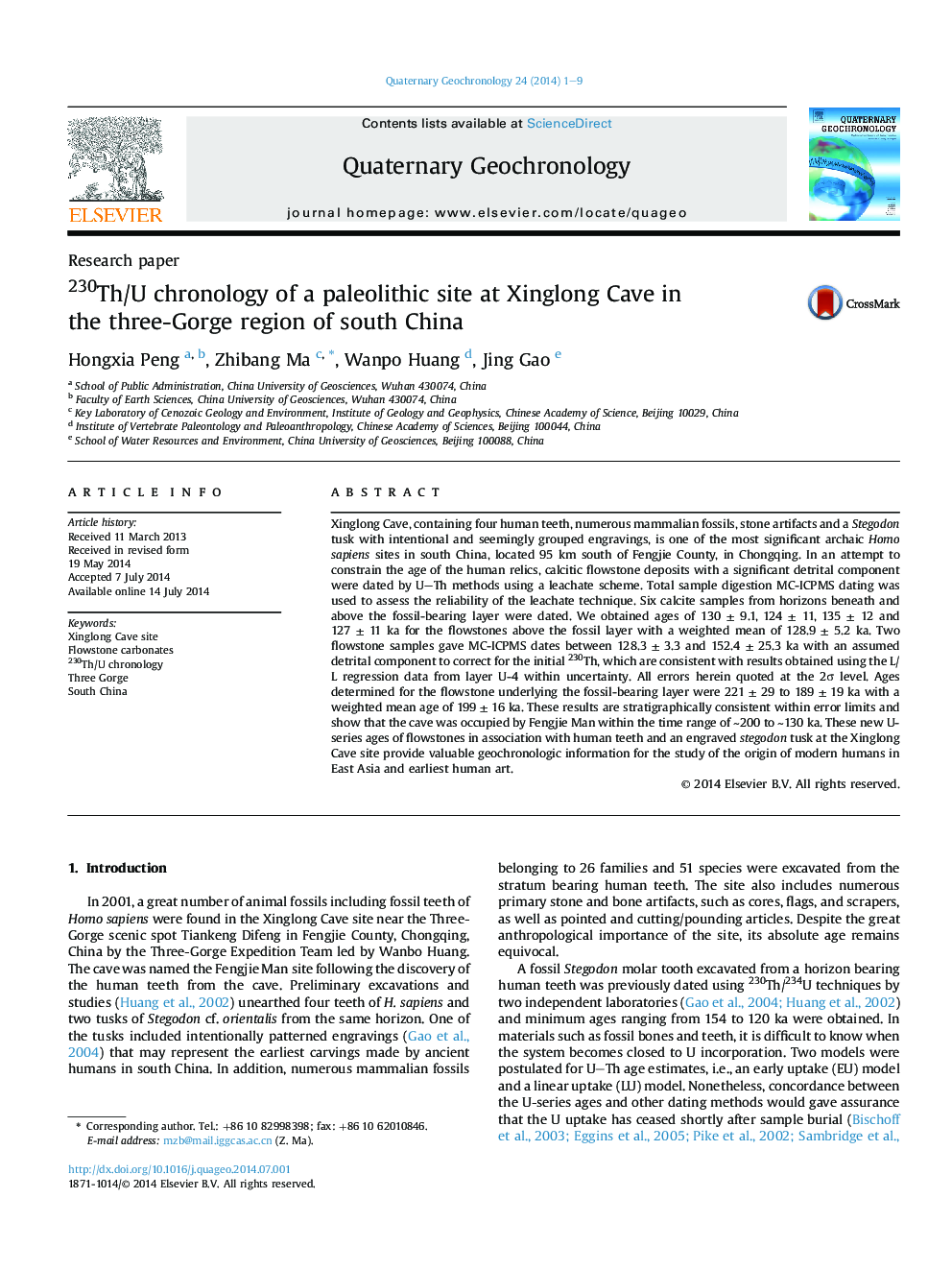| کد مقاله | کد نشریه | سال انتشار | مقاله انگلیسی | نسخه تمام متن |
|---|---|---|---|---|
| 4724908 | 1639852 | 2014 | 9 صفحه PDF | دانلود رایگان |

• Flowstone carbonate 230Th/U dating was used to determine the age of newly Homo sapiens site.
• Multiple-point L/L regressions provide the more reliable chronology.
• MC-ICPMS dating was used to confirm the reliability of the leachate techniques.
• U-series ages range overlying/underlying of fossil layer takes 129/199 ka.
• Fengjie Man point to the late Middle Pleistocene responding to climatic change.
Xinglong Cave, containing four human teeth, numerous mammalian fossils, stone artifacts and a Stegodon tusk with intentional and seemingly grouped engravings, is one of the most significant archaic Homo sapiens sites in south China, located 95 km south of Fengjie County, in Chongqing. In an attempt to constrain the age of the human relics, calcitic flowstone deposits with a significant detrital component were dated by U–Th methods using a leachate scheme. Total sample digestion MC-ICPMS dating was used to assess the reliability of the leachate technique. Six calcite samples from horizons beneath and above the fossil-bearing layer were dated. We obtained ages of 130 ± 9.1, 124 ± 11, 135 ± 12 and 127 ± 11 ka for the flowstones above the fossil layer with a weighted mean of 128.9 ± 5.2 ka. Two flowstone samples gave MC-ICPMS dates between 128.3 ± 3.3 and 152.4 ± 25.3 ka with an assumed detrital component to correct for the initial 230Th, which are consistent with results obtained using the L/L regression data from layer U-4 within uncertainty. All errors herein quoted at the 2σ level. Ages determined for the flowstone underlying the fossil-bearing layer were 221 ± 29 to 189 ± 19 ka with a weighted mean age of 199 ± 16 ka. These results are stratigraphically consistent within error limits and show that the cave was occupied by Fengjie Man within the time range of ∼200 to ∼130 ka. These new U-series ages of flowstones in association with human teeth and an engraved stegodon tusk at the Xinglong Cave site provide valuable geochronologic information for the study of the origin of modern humans in East Asia and earliest human art.
Journal: Quaternary Geochronology - Volume 24, December 2014, Pages 1–9